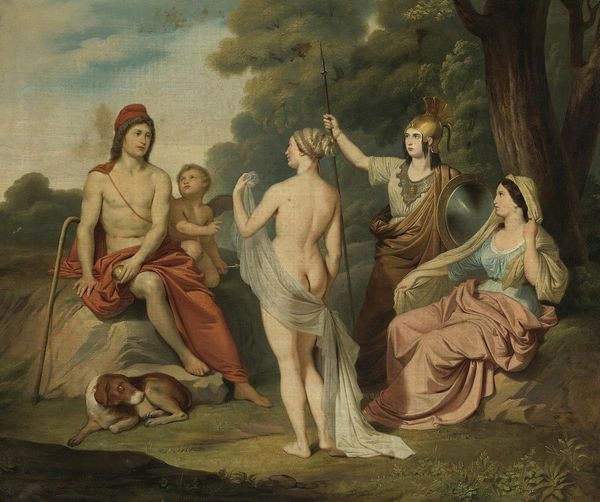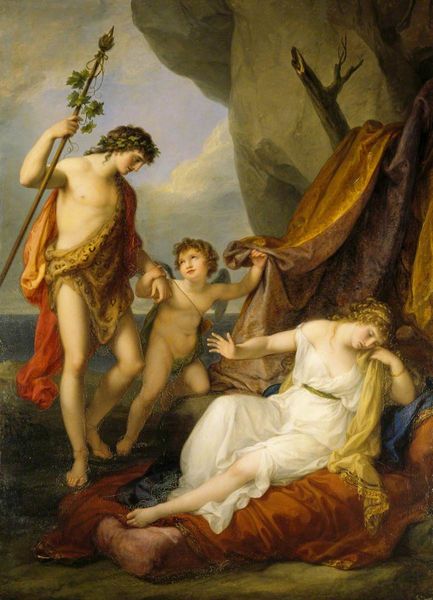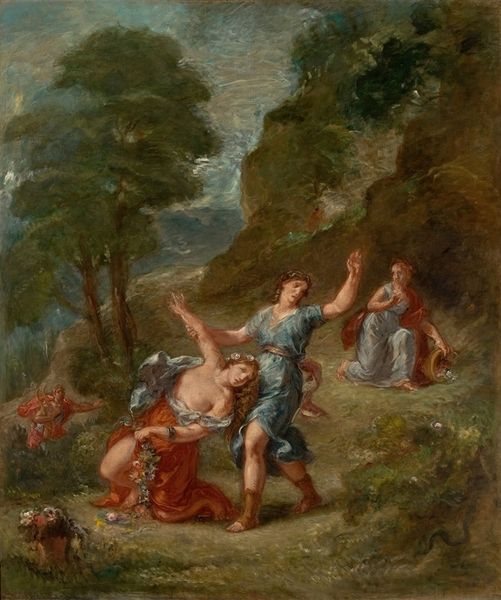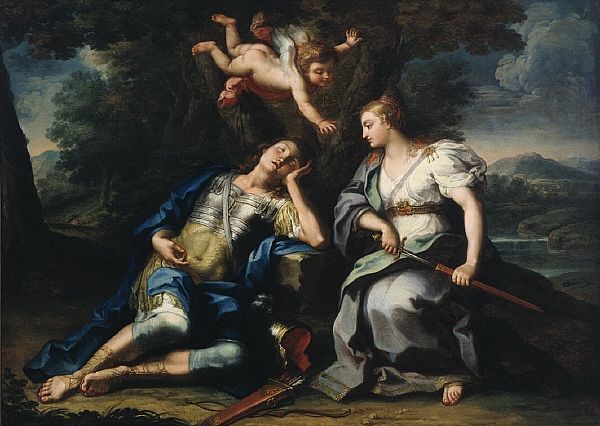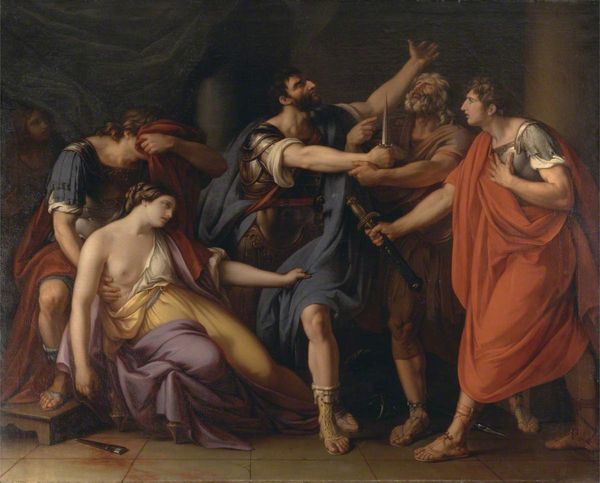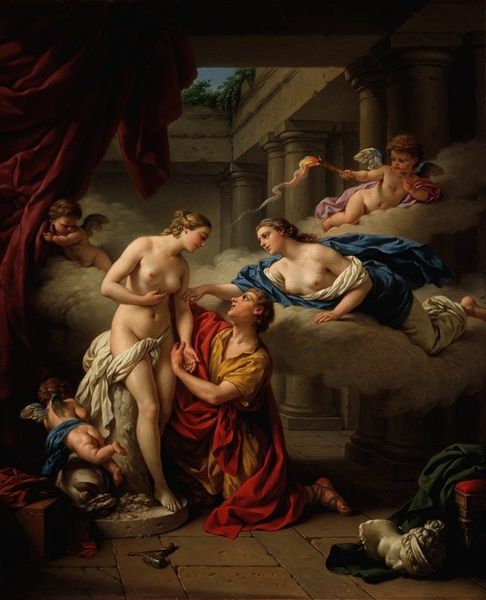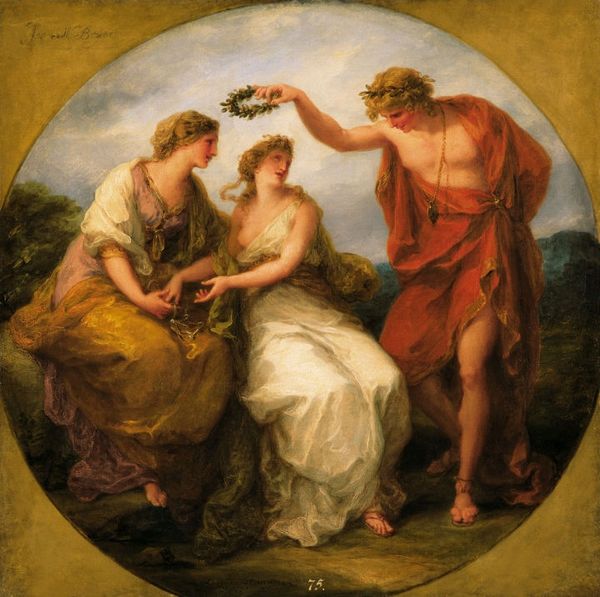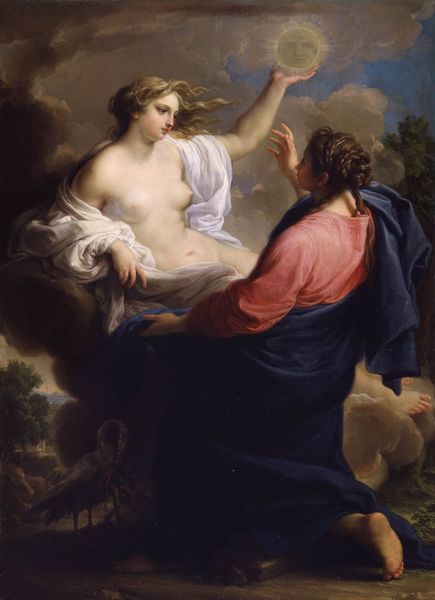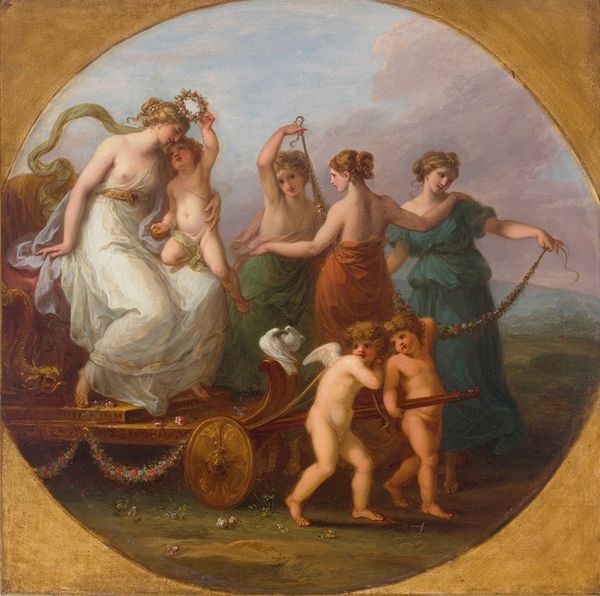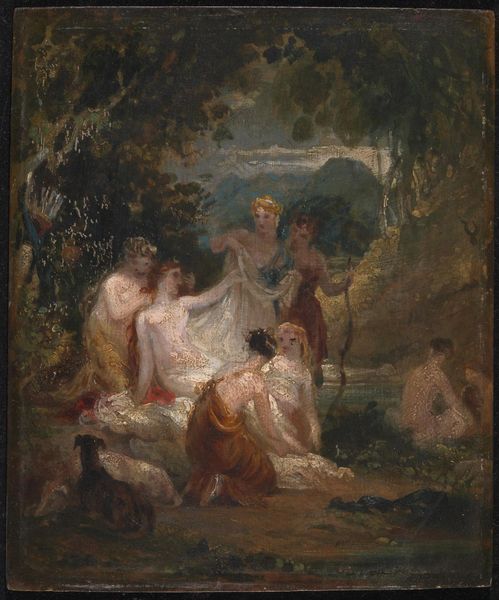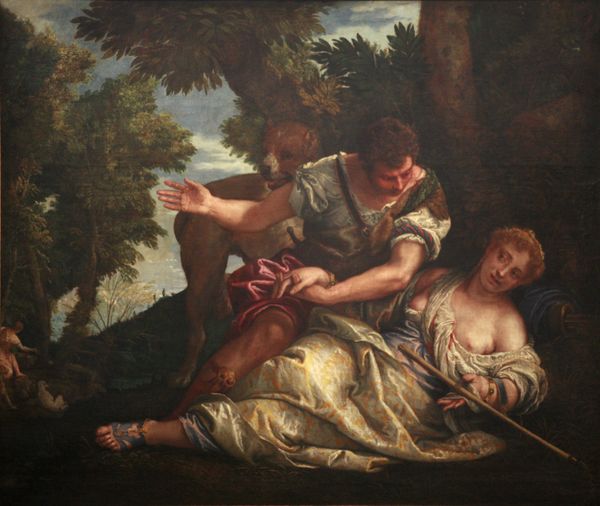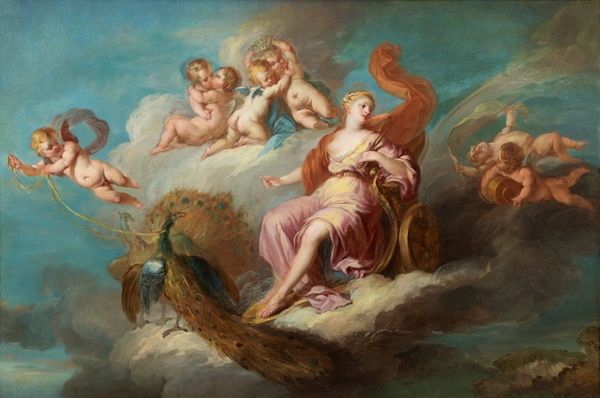
painting, oil-paint
#
allegory
#
narrative-art
#
baroque
#
painting
#
oil-paint
#
landscape
#
figuration
#
oil painting
#
mythology
#
painting painterly
#
history-painting
Copyright: Public domain
Curator: Salvator Rosa's oil on canvas, "The Finding of Moses," created around 1650, is currently located at the Kimbell Art Museum in Fort Worth. Rosa masterfully weaves together history, landscape, and mythology to tell this biblical story. Editor: The composition immediately strikes me as one of revelation. The women’s expressions range from awe to protectiveness as they discover the infant. Even the landscape feels charged, the broken tree a symbol perhaps. Curator: The landscape indeed plays a crucial role. In seventeenth-century painting, it's never merely backdrop. We see a blending of pastoral and heroic landscapes here which complicates ideas around nature and the feminine space surrounding the event. It draws parallels between the powerful women and the land. Editor: Looking at the arrangement of figures, I can’t help but think of the symbolism inherent in gestures. The central figure, perhaps a Pharaoh's daughter, raises her hand. It's like an acknowledgment of divine intervention. And what does that gaze carry? Curator: Well, within the sociopolitical climate of Baroque Italy, Rosa could be subtly critiquing power structures and hereditary rule. This Moses represents hope for a more just world and an implied threat to existing authority. Editor: That's interesting when juxtaposed with the luxuriousness implied in the costuming. Rosa presents us with finery which is then contradicted by the fragility of life discovered in the reeds, echoing common motifs found in momento mori art of the period. Curator: Exactly. The figures around baby Moses become representative of human action and agency versus predetermined authority. This moment, discovered by powerful women in finery, represents opportunity. It offers us insight into identity in moments of great sociopolitical shifts. Editor: I had noticed too the painterly style of Rosa feels very alive, imbuing each symbolic component within the piece. This allows, I believe, viewers across generations to enter the piece, feel the shock, recognize symbols that will ultimately alter one's place. Curator: The artwork remains a dynamic tableau, inviting us to reassess narratives surrounding identity, resilience, and revolution in both historical contexts and within contemporary society. Editor: Absolutely, considering the threads of time still resonating from this image offers great comfort and perspective.
Comments
No comments
Be the first to comment and join the conversation on the ultimate creative platform.
